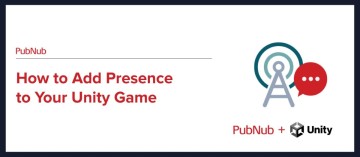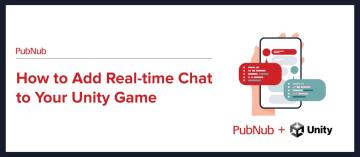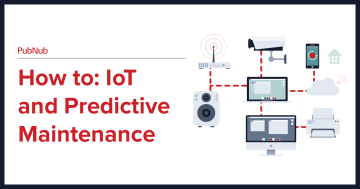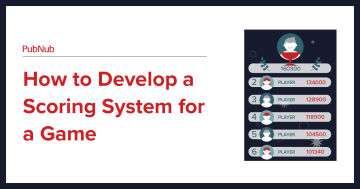How to

Gaming
How to Add Presence to Your Unity Game
Learn how to add Presence to your Unity Game to track the online and custom status of players. You'll learn about the different Presence Events, as well as implementing custom state to manage the exact location and activity of players in your game.

Gaming
How to Add Real-time Chat to Your Unity Game
Learn how to add real-time chat to your Unity video game with PubNub. Understand how to set up different channel patterns, send/receive messages, and then enhance/secure your in-game chat with advanced features.

IoT
How to Implement IoT Predictive Maintenance
Why are IoT and Predictive Maintenance a Big Deal?

Gaming
How to Develop a Scoring System for a Game
Read our complete guide on developing a scoring system for a game. In this guide, you’ll learn to build a scoring system to make your game interactive and social.

Push Notifications
Enabling Mobile Push Notifications: Android
Follow this how-to to enable PubNub's Mobile Push Gateway in the Admin Portal to send your Android users push notifications and alerts.

Virtual Events
How to Build Chat for Virtual Events
Virtual events need chat to keep users engaged, but it's often a challenge to build a chat solution that works at scale and can handle the network load surges that occur during popular events. As a developer, you need to select a robust backend API provider capable of transmitting and receiving the high volume of messages that your viewers and participants generate.

Gaming
How to Build Interactive 2d Chat Games
In this guide, we describe why you’d want to build a 2d game, types of 2d games, and tips for making your 2d games interactive, social, and engaging.

Push Notifications
Push Notifications
Follow this how-to to learn more about how you can leverage push notifications in your application to better keep your users engaged and informed.

IoT
How to develop an IoT solution with PubNub
Learn how to develop an IoT solution with PubNub, allowing you to monitor and control a global fleet of IoT devices in real-time